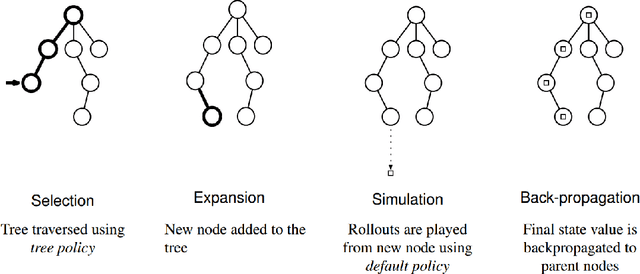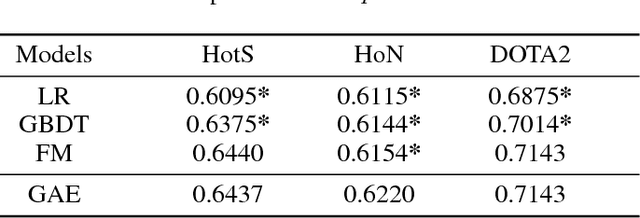Yuyu Xu
The Art of Drafting: A Team-Oriented Hero Recommendation System for Multiplayer Online Battle Arena Games
Jun 26, 2018



Abstract:Multiplayer Online Battle Arena (MOBA) games have received increasing popularity recently. In a match of such games, players compete in two teams of five, each controlling an in-game avatars, known as heroes, selected from a roster of more than 100. The selection of heroes, also known as pick or draft, takes place before the match starts and alternates between the two teams until each player has selected one hero. Heroes are designed with different strengths and weaknesses to promote team cooperation in a game. Intuitively, heroes in a strong team should complement each other's strengths and suppressing those of opponents. Hero drafting is therefore a challenging problem due to the complex hero-to-hero relationships to consider. In this paper, we propose a novel hero recommendation system that suggests heroes to add to an existing team while maximizing the team's prospect for victory. To that end, we model the drafting between two teams as a combinatorial game and use Monte Carlo Tree Search (MCTS) for estimating the values of hero combinations. Our empirical evaluation shows that hero teams drafted by our recommendation algorithm have significantly higher win rate against teams constructed by other baseline and state-of-the-art strategies.
Modeling Game Avatar Synergy and Opposition through Embedding in Multiplayer Online Battle Arena Games
Mar 28, 2018


Abstract:Multiplayer Online Battle Arena (MOBA) games have received increasing worldwide popularity recently. In such games, players compete in teams against each other by controlling selected game avatars, each of which is designed with different strengths and weaknesses. Intuitively, putting together game avatars that complement each other (synergy) and suppress those of opponents (opposition) would result in a stronger team. In-depth understanding of synergy and opposition relationships among game avatars benefits player in making decisions in game avatar drafting and gaining better prediction of match events. However, due to intricate design and complex interactions between game avatars, thorough understanding of their relationships is not a trivial task. In this paper, we propose a latent variable model, namely Game Avatar Embedding (GAE), to learn avatars' numerical representations which encode synergy and opposition relationships between pairs of avatars. The merits of our model are twofold: (1) the captured synergy and opposition relationships are sensible to experienced human players' perception; (2) the learned numerical representations of game avatars allow many important downstream tasks, such as similar avatar search, match outcome prediction, and avatar pick recommender. To our best knowledge, no previous model is able to simultaneously support both features. Our quantitative and qualitative evaluations on real match data from three commercial MOBA games illustrate the benefits of our model.
 Add to Chrome
Add to Chrome Add to Firefox
Add to Firefox Add to Edge
Add to Edge